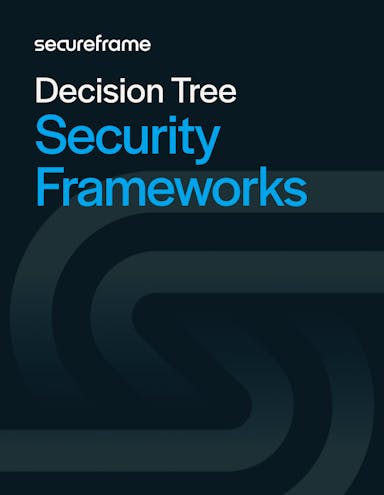
Cybersecurity Explained: What It Is & 13 Reasons Cybersecurity is Important
Anna Fitzgerald
Senior Content Marketing Manager
Rob Gutierrez
Senior Cybersecurity and Compliance Manager, CISA, CCSK, CMMC RP
Global weekly cyber attacks increased by 30% in the second quarter of 2024, marking the most significant increase in the last two years.
As the number of cyber attacks rises, so do the costs. The global cost of cybercrime is expected to surge in the next four years, rising from $9.22 trillion in 2024 to $13.82 trillion by 2028.
Both the frequency and costs of cybercrime are expected to continue to rise as malicious actors use generative AI to create faster-paced, more effective, and larger scale cyber attacks.
That’s why it’s more important than ever that organizations and individuals understand the importance of cybersecurity. This guide will provide an overview of cybersecurity, including what benefits it offers for organizations and individuals and how it works.
What is cybersecurity?
Cybersecurity refers to the efforts made to protect networks, systems, devices, and data from theft, damage, unauthorized access, and criminal use. It encompasses a broad range of measures, technologies, and practices designed to safeguard the confidentiality, integrity, and availability of information online from different types of cyberattacks.
As cyber threats continue to evolve and become increasingly complex, cybersecurity has become a priority for individuals, organizations, and governments around the world. Let’s take a closer look at why cybersecurity is important below.
Why cybersecurity is important: 13 key benefits
The World Economic Forum underscored the growing importance of cybersecurity, stating that cyberattacks are one of the top risks facing businesses with the potential to have a global impact in 2024.
Cyber insecurity was also ranked as one of the most severe risks in both the short and long term.
Cybersecurity is critical for contributing to a more positive outlook for the world over the next two years and decade. It offers several key benefits, including safeguarding customer data, personal privacy, critical infrastructure, national security, and global security.
Below we’ll take a closer look at several of these benefits, particularly for businesses.

1. Protecting sensitive data
Businesses and government agencies store vast amounts of sensitive and confidential data electronically, including customer information, financial records, intellectual property, trade secrets, and government secrets.
Implementing strong cybersecurity measures can help mitigate the risk of theft, exposure, or manipulation of this data by malicious actors, preventing severe business disruptions and financial losses.
2. Protecting personal privacy
Cybersecurity is also important for protecting data privacy. Data privacy emphasizes responsible handling of sensitive information, while data security focuses on protecting that information from unauthorized access.
A cybersecurity strategy that includes privacy controls and measures can ultimately improve data protection by limiting the amount of sensitive information that may be breached or exposed to unauthorized parties.
3. Preventing financial loss
Cyberattacks can lead to significant financial losses for both individuals and businesses. In 2022, an estimated 463 million individuals experienced a cyber crime. Over half of those individuals experienced financial loss as a result, at an average of $193 for US consumers.
For businesses, the consequences of cyberattacks can be even more costly, potentially leading to operational downtime, lost customers and revenue, regulatory fines, and high remediation costs.
Take the 2013 attack on Yahoo, for example. When hackers stole data from three billion users’ accounts, the company had to notify all of its users that their data was compromised. As the biggest known breach of a company’s computer network, it made global news. After disclosing another incident that took place in 2014 and affected 500 million accounts, Yahoo almost lost its acquisition deal altogether with Verizon and ultimately, $350 million was cut from the original offer. Yahoo also suffered additional financial losses in numerous lawsuits, regulatory investigations, and scrutiny from governing authorities that precipitated the breaches.
Investing in cybersecurity before a breach occurs can help avoid financial consequences like these.
4. Meeting compliance and legal obligations
Numerous laws and regulations, including HIPAA, PCI DSS, GDPR, CCPA, SOX, and FISMA, require organizations to safeguard sensitive data and protect the privacy of individuals. As mentioned above, failure to comply with these laws and regulations can result in penalties and fines. In addition to financial losses, organizations face other risks for failing to comply, including disruptions to their operations.
For example, non-compliance with PCI DSS could lead to the suspension of your ability to accept major credit cards like Visa and Mastercard. If you’re an ecommerce business, this could significantly impact your customers and revenue and even force you to suspend operations.
Implementing a robust cybersecurity strategy can help organizations meet their compliance and legal obligations and avoid these compliance risks.

Security frameworks decision tree
Use this series of questions to help select the best security framework(s) based on your or your clients' industry, data, and needs.
5. Ensuring business continuity
Cyberattacks, such as ransomware, can disrupt business operations, causing downtime and financial losses.
For example, an August 2023 cybersecurity attack caused a wide-scale disruption of Clorox's operations, including order processing delays and significant product outages. In October 2023, the company announced that this disruption would likely impact first quarter earnings for 2024, and they expected sales to drop 23% to 28%. In 2024, Clorox filed reports with the Securities and Exchange Commission, which put total costs resulting from the attack at about $49 million.
Effective cybersecurity measures help ensure the continuity of operations, reducing the risk of downtime and negative impacts on net sales and earnings like this.
Recommended reading

How to Write a Business Continuity Plan + Template
6. Accelerating revenue growth
Strong cybersecurity is not only key to avoiding financial losses and non-compliance penalties and fines — it’s also key to boosting revenue.
According to a landmark study by IBM, mature security organizations see a 43% higher revenue growth rate over five years than the least mature organizations. Additionally, 66% of business leaders view cybersecurity primarily as a revenue enabler.
Part of the reason is that cybersecurity is increasingly becoming a requirement for businesses to engage with certain customers and partners or operate in regulated markets and sectors. For example, organizations within the Defense Industrial Base (DIB) that wish to bid on and participate in contracts with the U.S. Department of Defense (DoD) must demonstrate strong cybersecurity measures through the appropriate CMMC certification level.
CMMC certification not only ensures contractors are eligible to compete for these lucrative contracts — it also demonstrates a contractor's commitment to cybersecurity, making them more attractive to potential clients and partners in broader markets. This can differentiate them from competitors who may not have the same level of security assurance and help them win deals. This is why more organizations are pursuing certification or compliance with frameworks like CMMC, SOC 2, and ISO 27001 even if they aren’t required to.
In fact, 72% of businesses in 2023 completed a compliance audit specifically to win new business — an increase from 63% in 2022 — and 29% of organizations lost a new business deal because they were missing a compliance certification.
In the same survey, organizations reported the driving force behind their compliance program is to increase revenue/win new clients (23%). For large companies with over $1 billion in revenue, the percentage is even higher at 34%.
By investing in robust cybersecurity measures, businesses can unlock new market opportunities, win larger contracts, and expand their customer base, ultimately accelerating revenue growth.
Recommended reading

How Alpine IQ Got SOC 2 and HIPAA Compliant in Weeks and Closed 8 of the Top 12 Enterprise Companies in the Cannabis Industry
7. Building and maintaining trust
Trust is essential for businesses looking to accelerate growth. A data breach or security incident can erode trust with customers, partners, employees, investors, and other stakeholders and damage the brand’s reputation.
In a study conducted by Ponemon Institute and sponsored by Centrify, 65% of consumers affected by one or more breaches said they lost trust in the breached organization and more than 31% said they discontinued their relationship with the organization as a result.
This is a huge issue according to both CMOs and IT practitioners and. 61% of CMOs and 49% of IT practitioners in the Ponemon study said the biggest cost of a security incident is the loss of reputation and brand value.
Implementing strong cybersecurity measures from the start can help you build and maintain trust with customers and other key stakeholders.
8. Protecting shareholder value
Cybersecurity can also help protect the shareholder value of your company. In that same study by Ponemon Institute, they looked at the stock prices of 113 publicly traded benchmarked companies that experienced a data breach involving the loss of customer or consumer data, and compared what it was 30 days prior to the announcement of the data breach and 90 days following the data breach.
Their analysis showed that the companies’ share price declined soon after the incident was disclosed. However, companies that self-reported their security posture as superior and quickly responded to the breach event were able to recover their stock value after an average of 7 days, whereas companies that had a poor security posture at the time of the data breach and did not respond quickly to the incident experienced a stock price decline that lasted more than 90 days on average. The latter also experienced a 4% greater loss of share price than companies with a high security posture.
Implementing a robust cybersecurity strategy can help reduce the risk of data breaches and consequent declines in your organization’s stock prices.
9. Supporting national security
Governments and critical infrastructure are heavily reliant on digital technologies. Cyberattacks on national security systems can have devastating consequences on national security, public safety, and economic prosperity, impacting both public and private sectors.
If threat actors are able to infiltrate government agencies, they may gain access to sensitive data, which potentially compromises classified information and exposes critical infrastructure. With this access, they may be able to destroy or alter data, impersonate legitimate people, and even degrade or disrupt federal computer networks.
For example, in the 2021 attack on the major US information technology firm SolarWinds, foreign attackers were able to use the hack to spy on US agencies, including the Department of Homeland Security and Treasury Department, as well as private companies, including Microsoft, Cisco, Intel, and Deloitte, and other organizations like the California Department of State Hospitals and Kent State University. Intelligence officers fear that these attackers not only gained access to sensitive and confidential information roaming around American computer networks for nine months, but also planted something more destructive for use in the future.
Because cybersecurity is essential to the basic functioning of economies, the operation of critical infrastructure, the privacy of data and communications, and national defense, federal, state, and local agencies must implement enhanced cybersecurity measures to prevent attacks like the SolarWinds hack.

The Ultimate Guide to Federal Frameworks
Get an overview of the most common federal frameworks, who they apply to, and what their requirements are.
10. Defending critical infrastructure
As mentioned above, critical infrastructure such as banks, hospitals, factories, power grids, and water treatment facilities rely heavily on digital technologies. A cyberattack on these systems can have severe consequences for public safety and well-being.
A 2023 Waterfall Security report revealed that attacks that led to physical consequences in the real world impacted over 150 industrial operations in 2022, and that the number of these attacks more than doubled from 2021. Examples of the physical consequences of these attacks include:
- Outages at widely-known companies, including 14 of a top automobile manufacturing brand’s plants, 23 tire plants of a well-known brand, a major food company, and publishing company
- Flight delays for tens of thousands of air travelers
- Malfunctions of loading and unloading of cargo containers, fuel and bulk oil for half a dozen seaports on three continents
Cybercriminals are increasingly targeting critical infrastructure. For example, according to a new report, sectors including banking, financial services, government, and public utilities experienced a 55% increase in distributed denial-of-service (DDoS) attacks over the past four years.
David Travers, director of the Water Infrastructure and Cyber Resilience Division of the Environmental Protection Agency (EPA), said some estimates find a three- to sevenfold increase in the number of cyber attacks against critical infrastructure, most of it ransomware.
As the frequency and intensity of cyber attacks increase, cybersecurity measures are essential for helping to protect the availability and resilience of this infrastructure and the essential services it provides.
11. Supporting global security
In today's interconnected world, cyberattacks can have far-reaching and cascading effects. A security breach in one organization can impact partners, suppliers, and customers across the globe.
For example, in 2017, Russian military hackers launched a ransomware attack known as NotPetya with Ukraine as its primary target. However, NotPetya quickly spread to more than 60 countries, destroying the computer systems of thousands of multinational companies, including the global transport and logistics giant Maersk, the pharmaceutical giant Merck, FedEx’s European subsidiary TNT Express, French construction company Saint-Gobain, food producer Mondelēz, and manufacturer Reckitt Benckiser, among others. With the total damage estimated at more than $10 billion, NotPetya is still considered the most destructive and costly cyberattack in history.
Cybersecurity is therefore essential for maintaining the stability of the digital ecosystem globally.
12. Reducing cybercrime
Defined as malicious cyber activity that threatens the public’s safety and national and economic security by the FBI, cybercrime is a global issue that affects individuals and organizations alike.
As the NotPetya example above indicates, cybercrime is not only damage, destruction, or theft of data or money — it is also the cascading effects that take place during and after the crime, including lost productivity, embezzlement, fraud, disruptions to the normal course of business, forensic investigation, restoration and deletion of hacked data and systems, reputational damage, and more.
Cybersecurity measures help protect both individuals and organizations from various forms of cybercrime, including identity theft, phishing, ransomware, and fraud.
13. Keeping pace with evolving threats
As technology advances, so do the capabilities of cyber attackers. Most recently, hackers are using generative AI to launch larger volumes of attacks. In a report by Deep Instinct, 75% of security professionals reported an increase in attacks over the past 12 months, with 85% attributing this rise to bad actors using generative AI.
Cyber attacks are not only more frequent but also more sophisticated thanks to AI. For example, hackers are using gen AI to create self-evolving malware, which automatically creates variations with unique techniques, payloads, and polymorphic code to attack a specific target and go undetected by existing security measures.
To stay ahead of malicious actors and new and evolving threats, such as AI-powered attacks, organizations must invest in ongoing cybersecurity measures and innovation.
Recommended reading

190 Cybersecurity Statistics to Inspire Action This Year [October 2024 Update]
How does cybersecurity work?
Cybersecurity works by implementing a broad range of measures and safeguards to protect networks, systems, devices, and data. Some of these are detailed below:
- Access control: Access control is the practice of managing who has access to resources, such as data, files, networks, systems, or physical spaces, and what actions they can take with those resources. It is typically implemented through a combination of technical and administrative controls, including passwords, encryption, firewalls, and other security technologies to restrict access to resources and policies, procedures, training, and other measures to limit, control, and/or restrict manage access, monitor usage, and enforce security rules.
- Baseline configurations: Baseline configuration refers to the most secure state a system can be in while meeting operational requirements and constraints like costs. This may include least functionality, segmentation, defense in depth or layers to limit the impact of risks. Developing secure baseline configurations is an important part of configuration management and cybersecurity overall.
- Security awareness and training: Human error can have serious consequences on cybersecurity. For example, consider that 73% of data breaches in 2023 involved the human element, either via error, privilege misuse, use of stolen credentials, or social engineering. Educating employees and individuals about security and privacy best practices is therefore essential to minimize the risk of cyber attacks within organizations and in their everyday lives.
- Security policies: Developing and enforcing security policies is essential for maintaining a strong cybersecurity posture. As mentioned above, these can help employees understand who has access to company systems as well as what other processes are in place to protect the organization and its assets and how they can behave to minimize risks.
- Incident response: Preparing for and responding to cybersecurity incidents, such as data breaches or malware infections, is a critical part of cybersecurity. Incident response plans outline instructions and procedures to detect, respond to, and limit the consequences of a security incident.
- Business continuity planning: Business continuity planning can help an organization identify preparations and recovery actions that can assist it in resuming operations and services as quickly as possible during and after a crisis. The document that contains the predetermined set of procedures that describe how an organization will sustain its business operations during and after a significant disruption is known as a business continuity plan.
- Vulnerability management: Vulnerability management is a process organizations use to identify, analyze, and manage vulnerabilities within their operating environment. Vulnerabilities are weaknesses in systems, platforms, infrastructure, or even people and processes that can be exploited by threat actors, rendering an entire organization or any of its parts susceptible to attack. Having a robust vulnerability management process is an important part of an organization's overall security and compliance program.
- Supply chain risk management: Supply chain risk management is a process companies use to manage supply chain risk. This involves identifying and assessing threats throughout the supply chain and developing mitigation strategies to protect the integrity, trustworthiness, and authenticity of products and services within that chain. This is an increasingly important part of cybersecurity as organizations’ supply chains become more global and complex, which means more potential failure points and higher levels of risk.
Types of cybersecurity
In today's digital landscape, cybersecurity encompasses a broad spectrum of practices aimed at protecting systems, networks, and data from attacks. Understanding the different types of cybersecurity can help organizations create a more comprehensive security posture. Below are key categories of cybersecurity, along with their definitions, significance, and examples.
1. Network Security
Network security involves the protection of an organization’s internal network from unauthorized access, misuse, or harm by deploying measures like firewalls, encryption, and intrusion detection systems (IDS).
Why it’s important: Most cyberattacks target an organization's network. A breach in network security can lead to data theft, ransomware infections, or system takeovers, making robust network protection essential.
Example: A financial institution uses a combination of firewalls and IDS to monitor traffic for malicious behavior and block unauthorized access.
2. Application Security
Application security focuses on securing software applications by identifying, fixing, and preventing vulnerabilities throughout the software development lifecycle (SDLC).
Why it’s important: Cybercriminals frequently exploit software vulnerabilities to launch attacks. A security flaw in an application could allow hackers to access sensitive data or even take control of entire systems.
Example: A healthcare app is tested for security flaws before deployment to ensure that patient data cannot be stolen through a cross-site scripting (XSS) vulnerability.
3. Cloud Security
Cloud security involves policies, technologies, and practices to protect data, applications, and infrastructure hosted in the cloud.
Why it’s important: As more businesses move operations to the cloud, securing cloud-based assets is crucial to prevent breaches and data loss. Cloud security mitigates risks related to misconfigurations, unauthorized access, and data exposure.
Example: A company uses identity and access management (IAM) tools to ensure that only authorized users can access specific cloud-based resources.
4. Information Security
Information security focuses on protecting information and information systems from unauthorized access, use, disclosure, disruption, modification, or destruction in order to provide confidentiality, integrity, and availability (CIA).
Why it’s important: InfoSec ensures that sensitive information, such as customer data and intellectual property, remains secure from unauthorized access and tampering.
Example: A retail business encrypts customer payment details in its database to ensure that if the database is breached, the data remains unreadable.
5. Identity and Access Management (IAM)
IAM refers to the processes and technologies used to manage digital identities and control access to data and systems through authentication and authorization mechanisms.
Why it’s important: Strong IAM policies prevent unauthorized users from accessing sensitive information or systems, reducing the risk of insider threats and data breaches.
Example: A tech company implements multi-factor authentication (MFA) for all employees to access the company’s systems, ensuring that even if passwords are stolen, the system remains secure.
6. Endpoint Security
Endpoint security involves protecting devices like laptops, mobile phones, and workstations that connect to a network. Endpoint protection solutions detect and respond to security threats targeting individual devices.
Why it’s important: With the increase in remote work, securing individual endpoints is critical to prevent attackers from using compromised devices as a foothold to enter the network.
Example: A small business issues security software to all employees' devices that includes antivirus protection, firewalls, and remote wipe capabilities.
7. Mobile Security
Mobile security focuses on protecting mobile devices like smartphones and tablets from threats such as malware, unauthorized access, and data breaches.
Why it’s important: Mobile devices are integral to both personal and business activities, often containing sensitive data. With increasing mobile usage and connectivity, these devices have become prime targets for cyberattacks, making their security critical.
Example: A company requires employees to use mobile device management (MDM) software to enforce encryption and secure access to corporate emails and files.
8. Internet of Things (IoT) Security
IoT security involves protecting interconnected devices, such as smart appliances, sensors, and industrial control systems, from cyber threats.
Why it’s important: IoT devices often have limited security capabilities, making them vulnerable to attacks. Securing these devices is crucial because they can serve as entry points for hackers to access larger networks or disrupt critical operations. For example, in 2016, a distributed denial of service (DDoS) attack that exploited thousands of IoT devices crippled major websites, including Twitter, Netflix, and Amazon. This attack underscored the growing threat posed by the proliferation of connected devices and the importance of IoT security.
Example: A smart home manufacturer incorporates secure boot and regular firmware updates into its IoT devices to protect against vulnerabilities and unauthorized firmware modifications.
9. Physical Security
Physical security refers to measures that prevent unauthorized physical access to company facilities, equipment, and resources. This includes alarms, surveillance, and access control systems.
Why it’s important: Physical access to systems and data centers could allow an attacker to bypass digital security measures entirely, making it an essential part of overall cybersecurity.
Example: A data center uses biometric scans and keycards to restrict access, ensuring that only authorized personnel can enter sensitive areas.

Internal Security Audit Checklist
Use this comprehensive checklist to assess your security practices and identify areas for improvement.
How Secureframe can help enhance your organization's cybersecurity measures
The importance of cybersecurity will continue to grow as our reliance on digital technologies deepens.
Organizations today are challenged to adopt these technologies, while mitigating increasingly complex risks and threats and continuing to meet compliance requirements.
Secureframe can help by simplifying and automating manual tasks related to security, privacy, and compliance. With Secureframe, you can automate risk assessments and cloud remediation with AI, manage vendor risk, consolidate audit and risk data and information, and conduct continuous monitoring to look for gaps in controls to maintain continuous compliance. Secureframe also makes training your workforce on the latest security and privacy best practices easy and automatic.
Plus, our in-house compliance team can give personalized advice based on your company’s unique risks and industry requirements.
To learn more about how Secureframe can play an integral part in enhancing your cybersecurity posture, request a demo today.
FAQs
What are the 5 benefits of using cybersecurity?
The five major benefits of cybersecurity are:
- Protecting sensitive information
- Meeting compliance and legal requirements
- Protecting brand reputation
- Preventing financial losses, including drop in shareholder value
- Protecting national and global security and critical infrastructure
Why is cybersecurity more important now than ever?
Cybersecurity is important because it helps to protect sensitive information and assets from being compromised by hackers and cybercriminals. This includes personal information, financial data, intellectual property, and confidential business information.
What does cybersecurity protect?
Cybersecurity protects networks, systems, devices, and data from theft, damage, unauthorized access, and criminal use.

Anna Fitzgerald
Senior Content Marketing Manager
Anna Fitzgerald is a digital and product marketing professional with nearly a decade of experience delivering high-quality content across highly regulated and technical industries, including healthcare, web development, and cybersecurity compliance. At Secureframe, she specializes in translating complex regulatory frameworks—such as CMMC, FedRAMP, NIST, and SOC 2—into practical resources that help organizations of all sizes and maturity levels meet evolving compliance requirements and improve their overall risk management strategy.

Rob Gutierrez
Senior Cybersecurity and Compliance Manager, CISA, CCSK, CMMC RP
Rob Gutierrez is an information security leader with nearly a decade of experience in GRC, IT audit, cybersecurity, FedRAMP, cloud, and supply chain assessments. As a former auditor and security consultant, Rob performed and managed CMMC, FedRAMP, FISMA, and other security and regulatory audits. At Secureframe, he’s helped hundreds of customers achieve compliance with federal and commercial frameworks, including NIST 800-171, NIST 800-53, FedRAMP, CMMC, SOC 2, and ISO 27001.